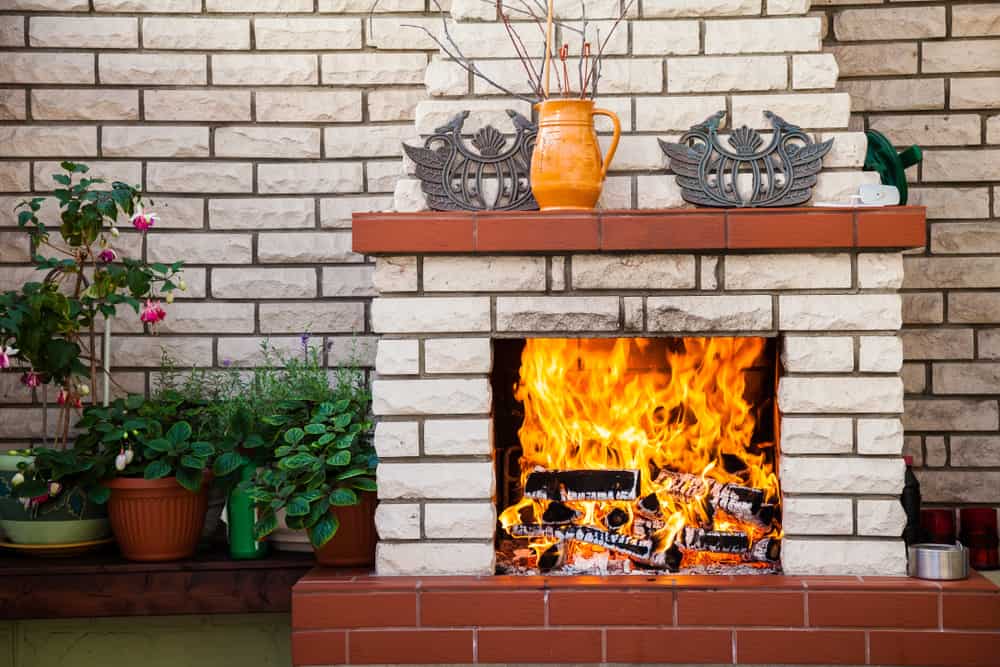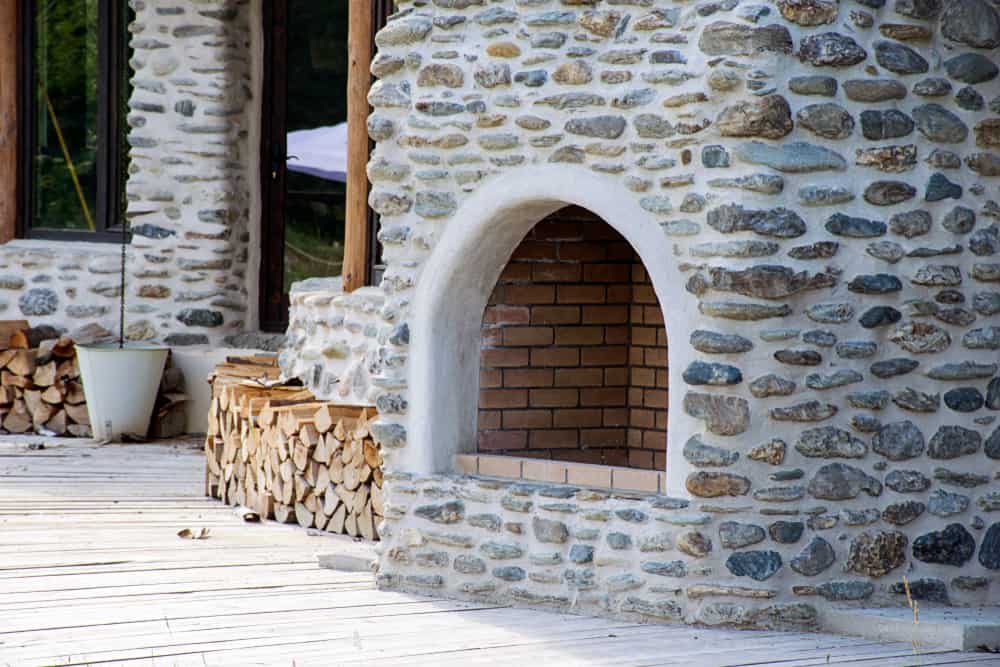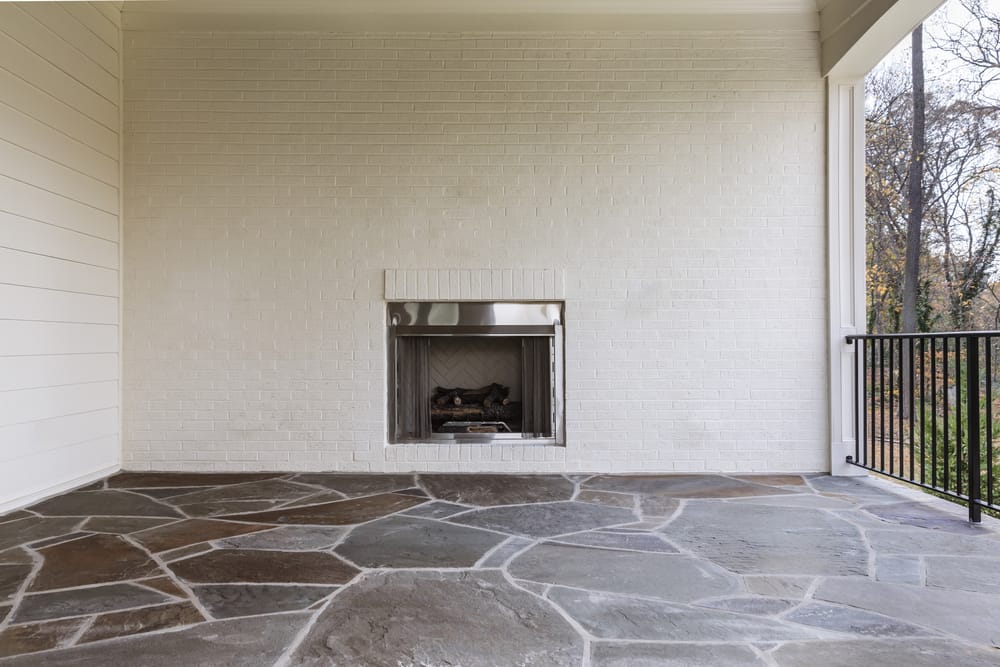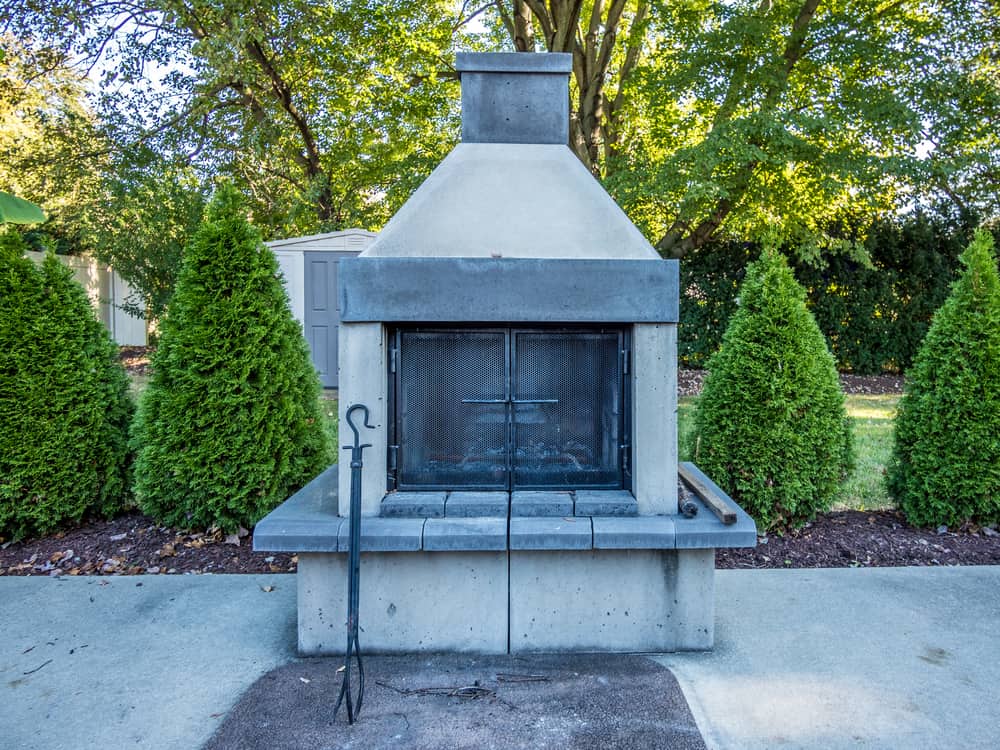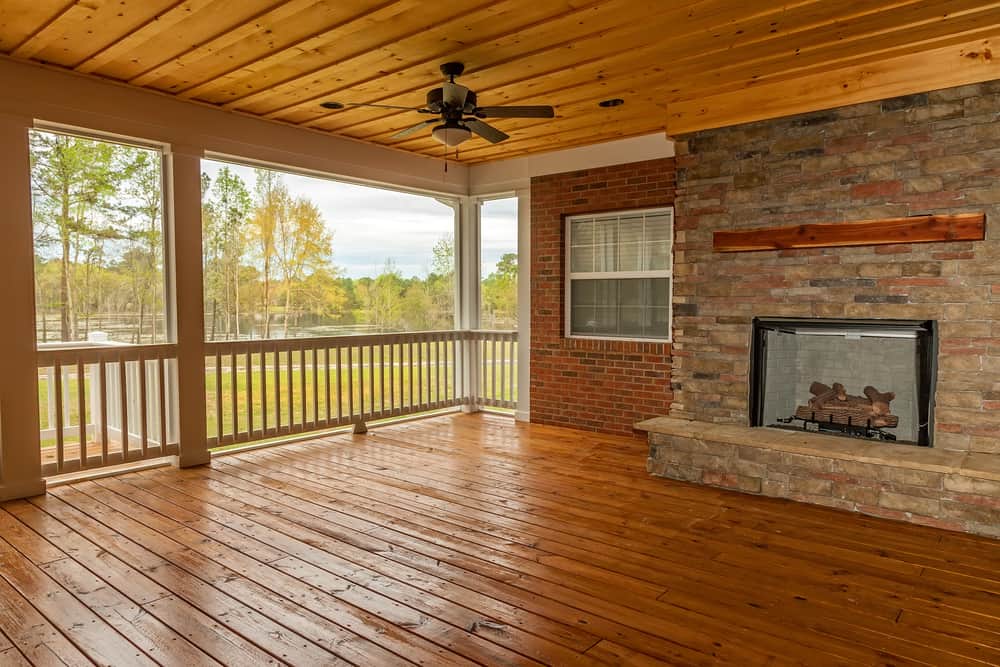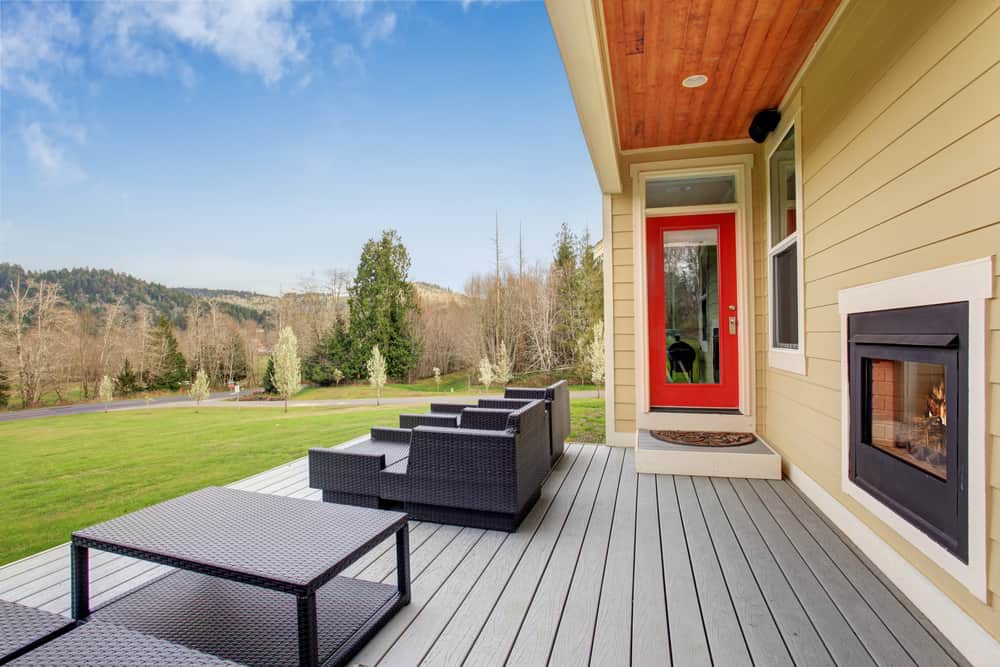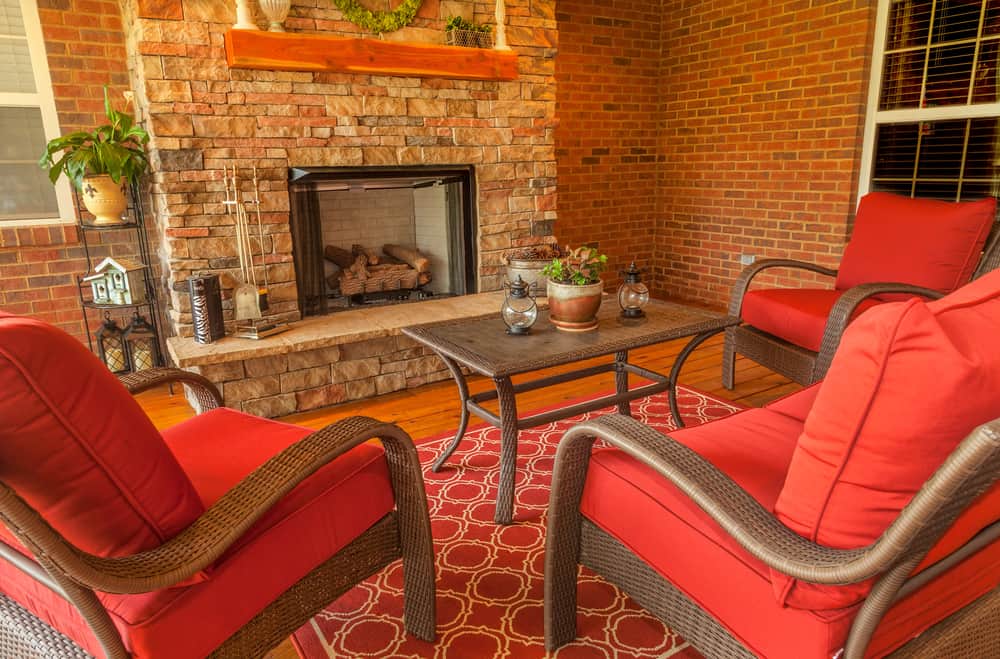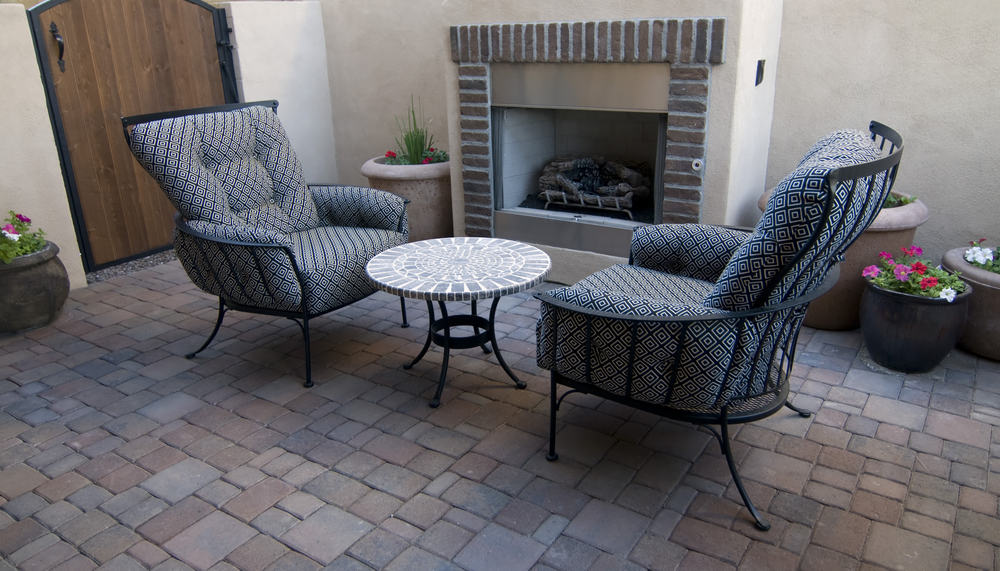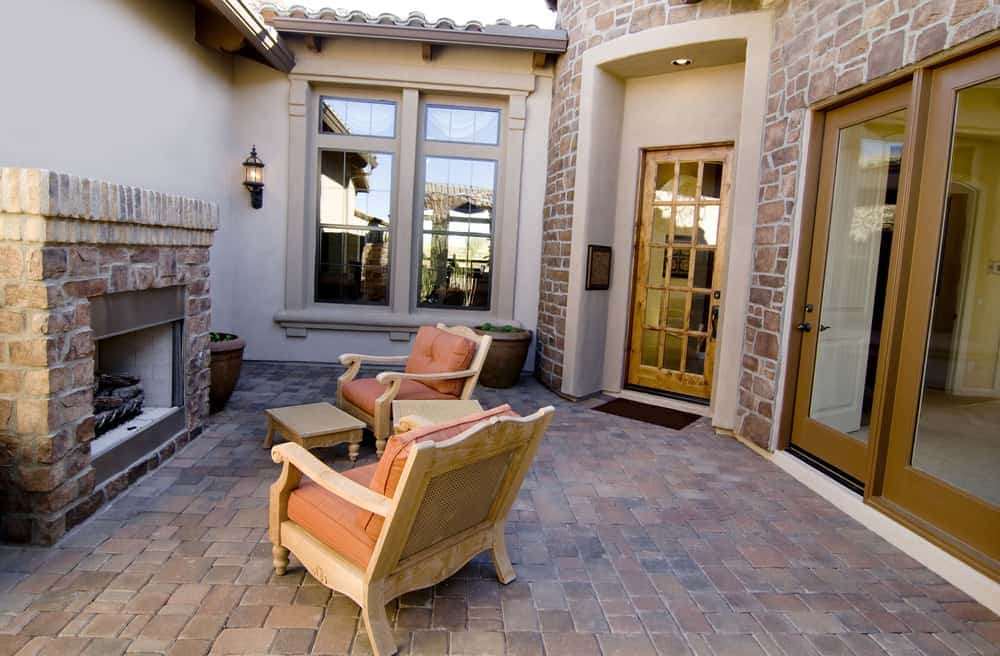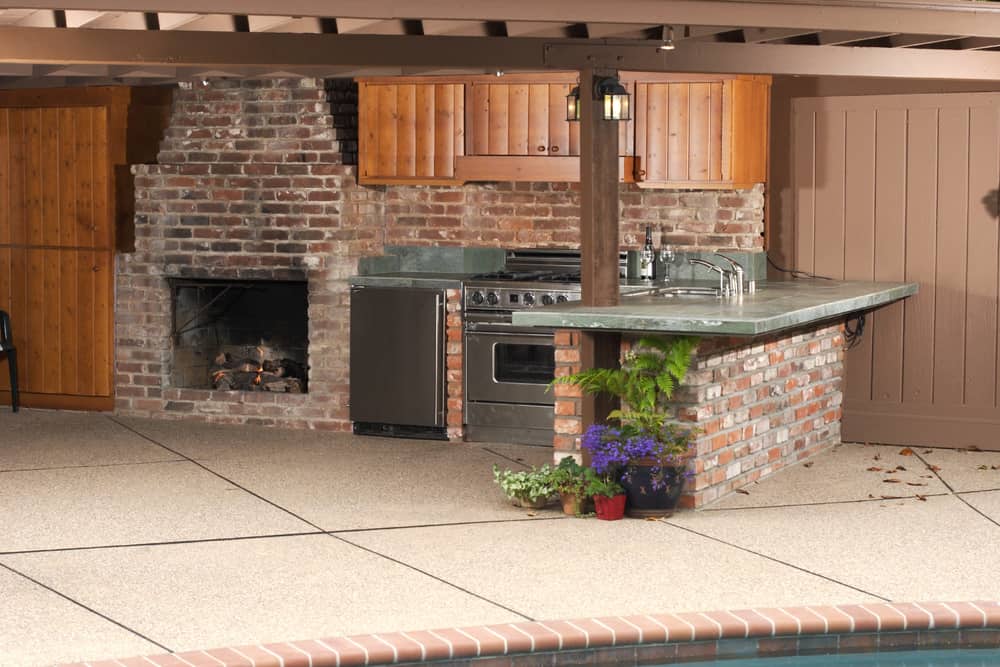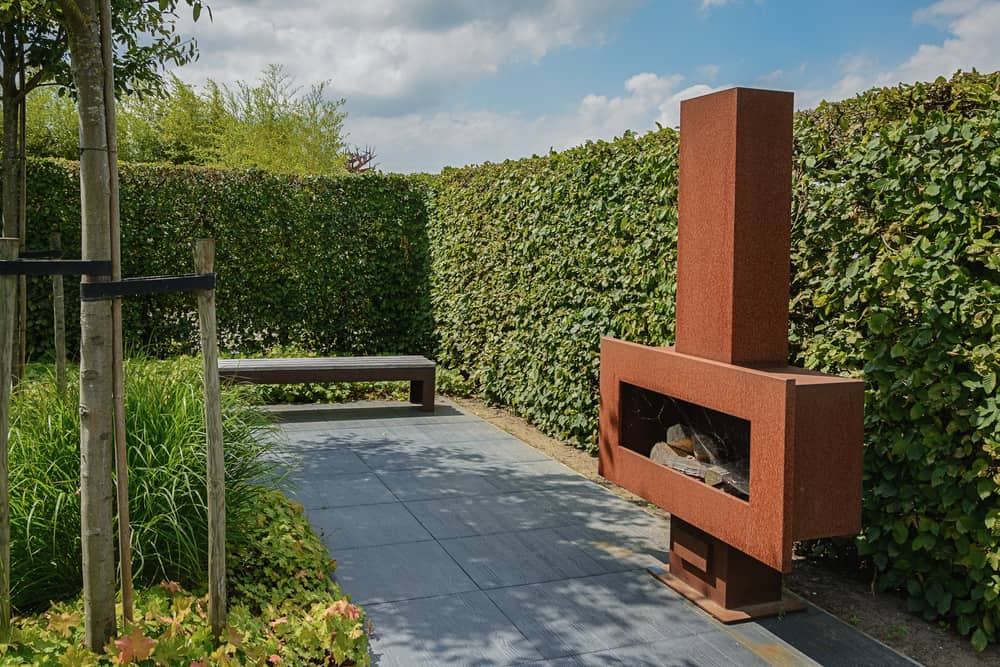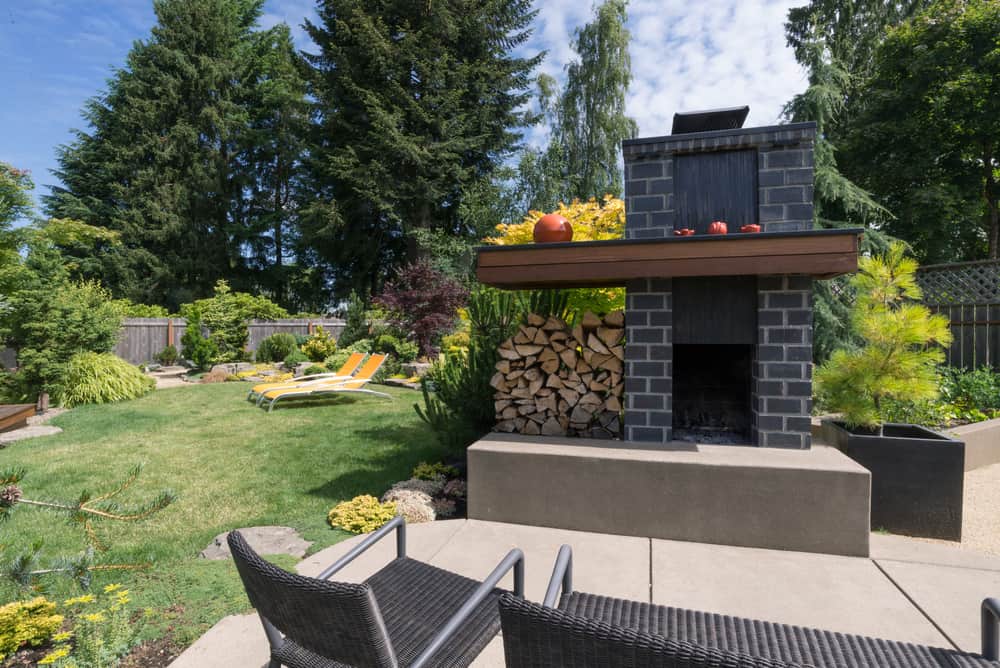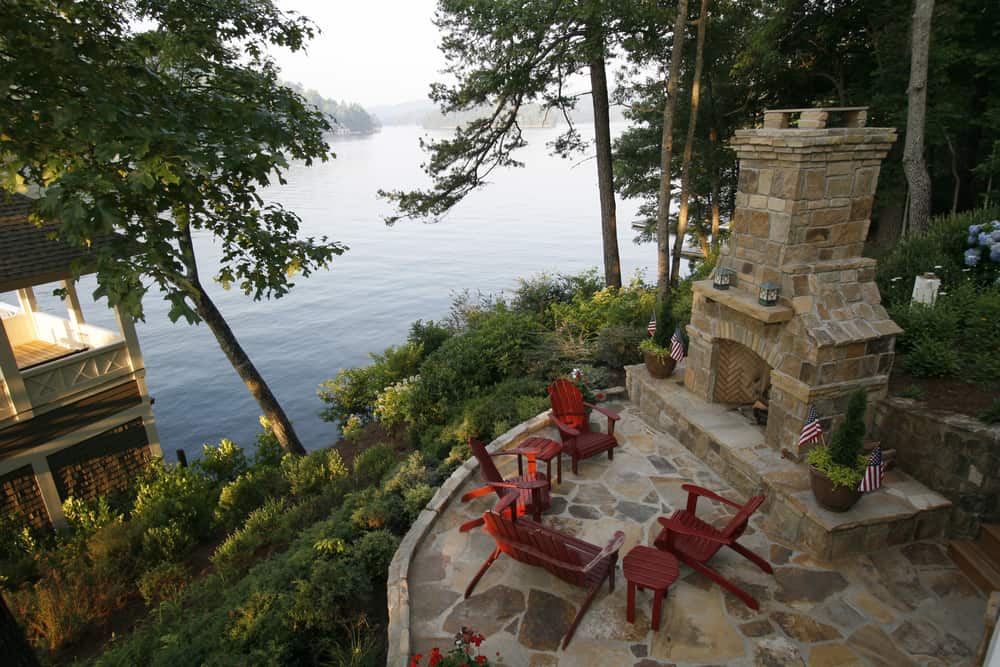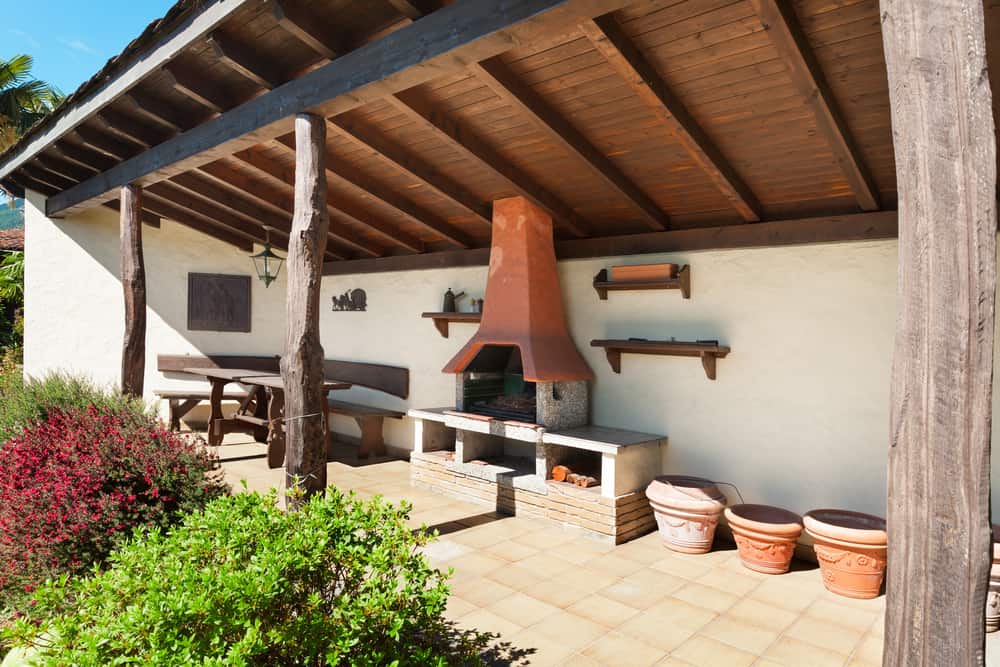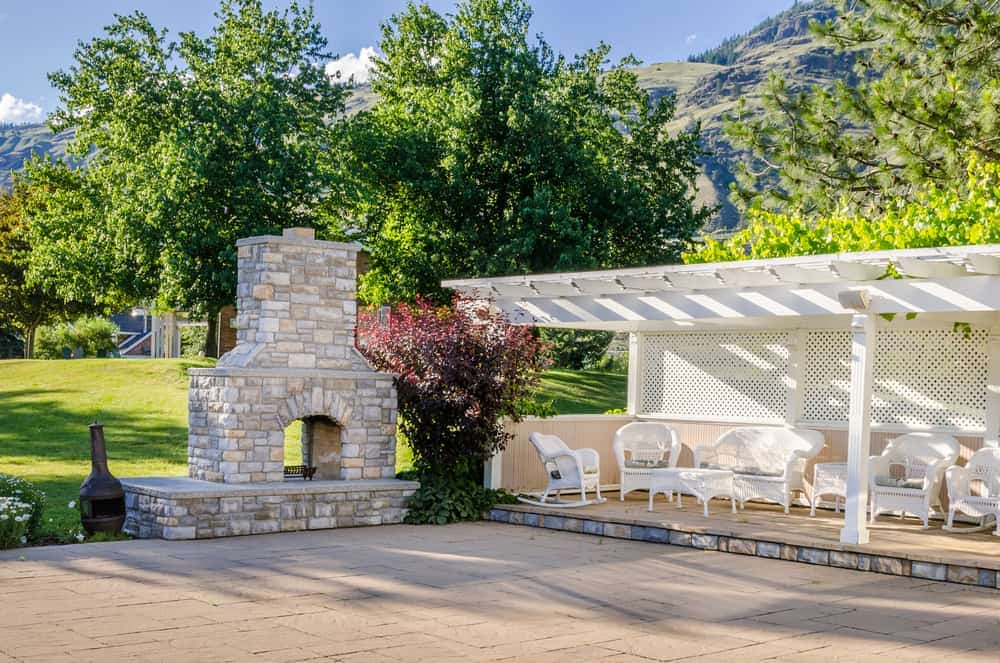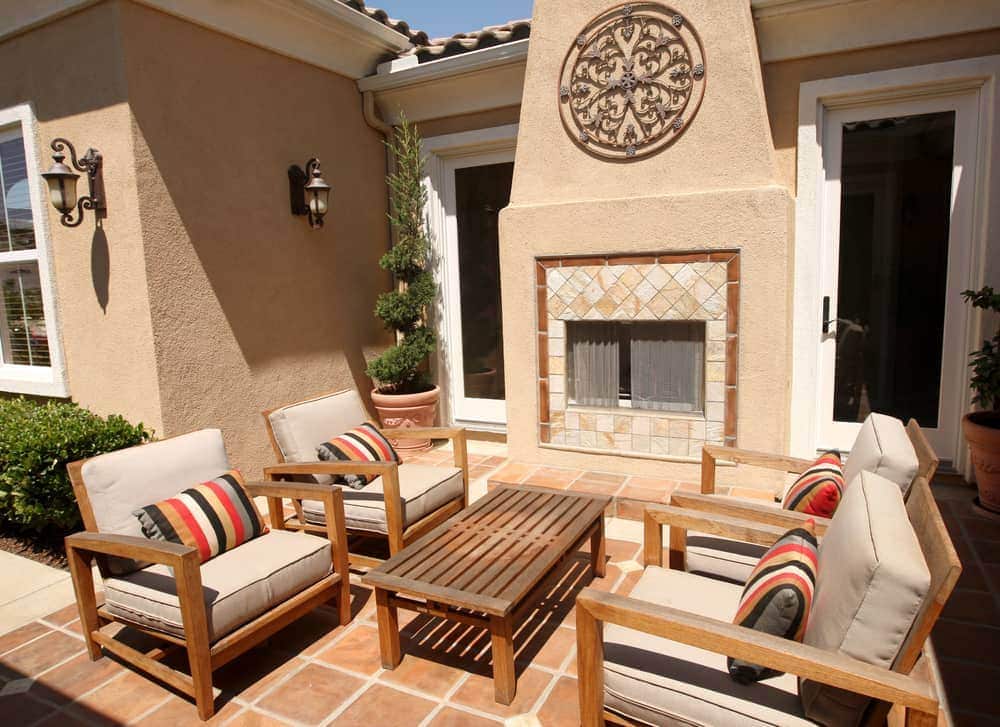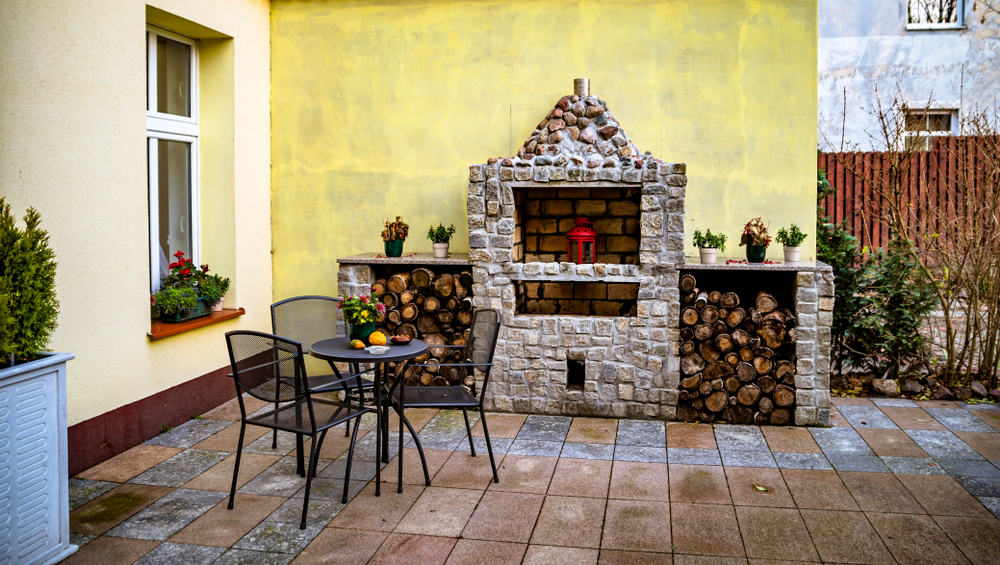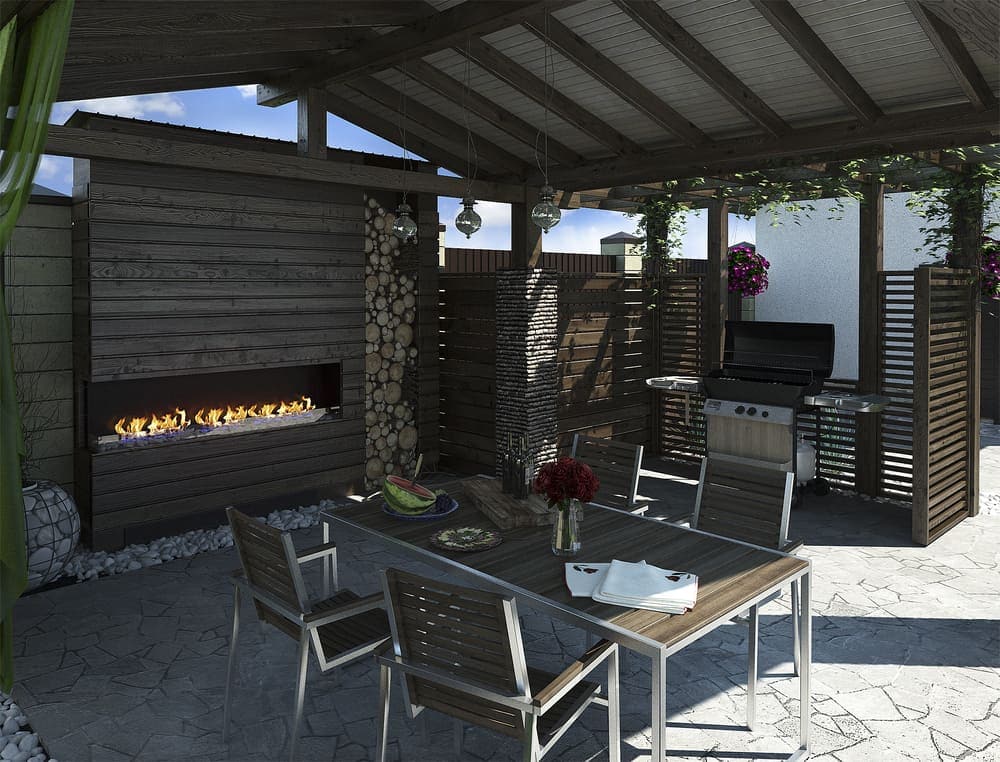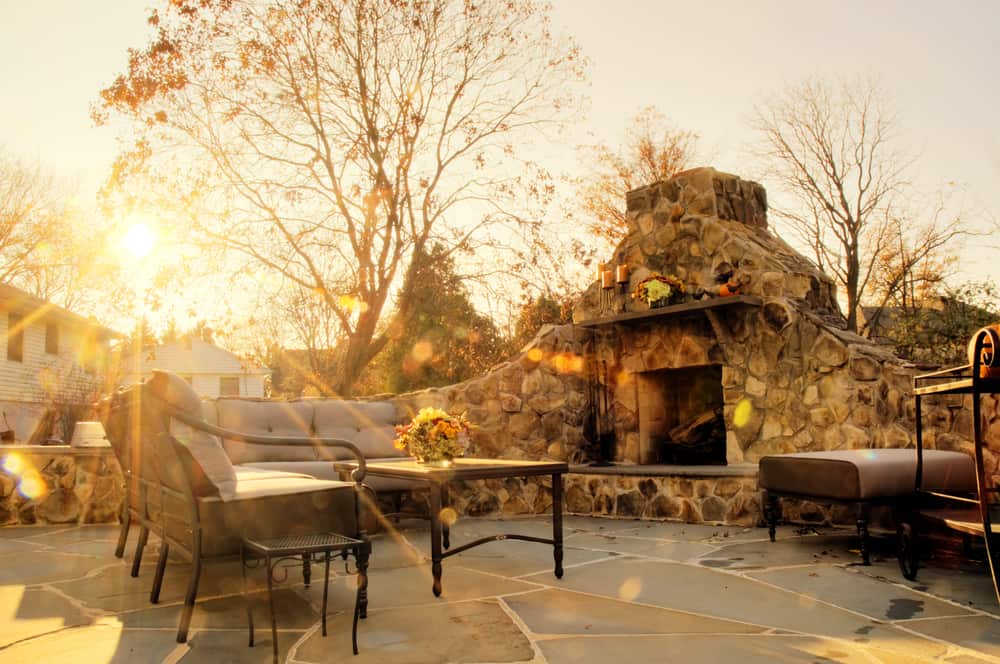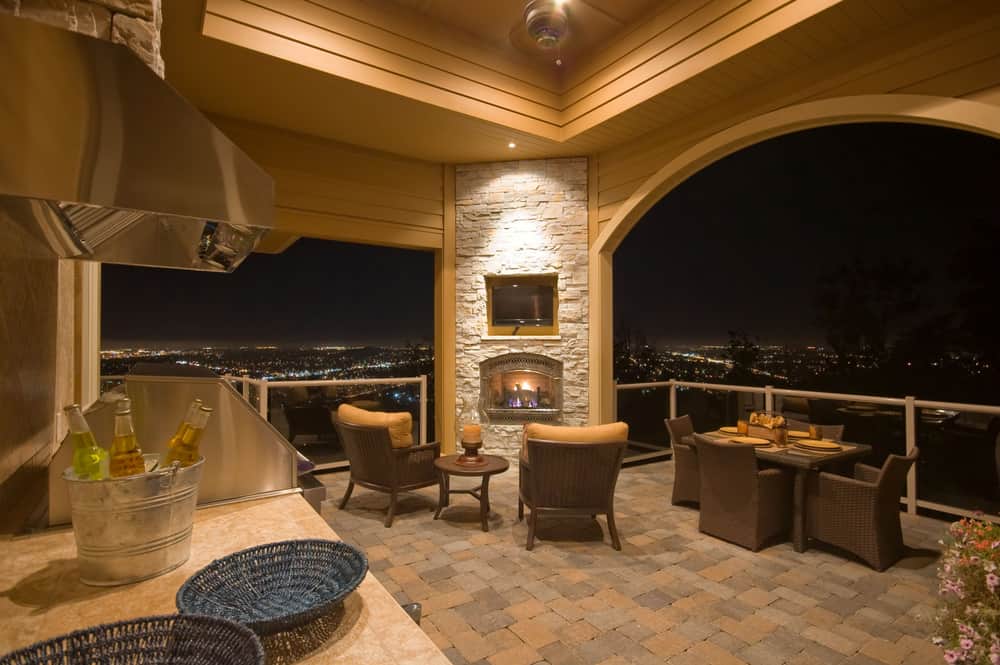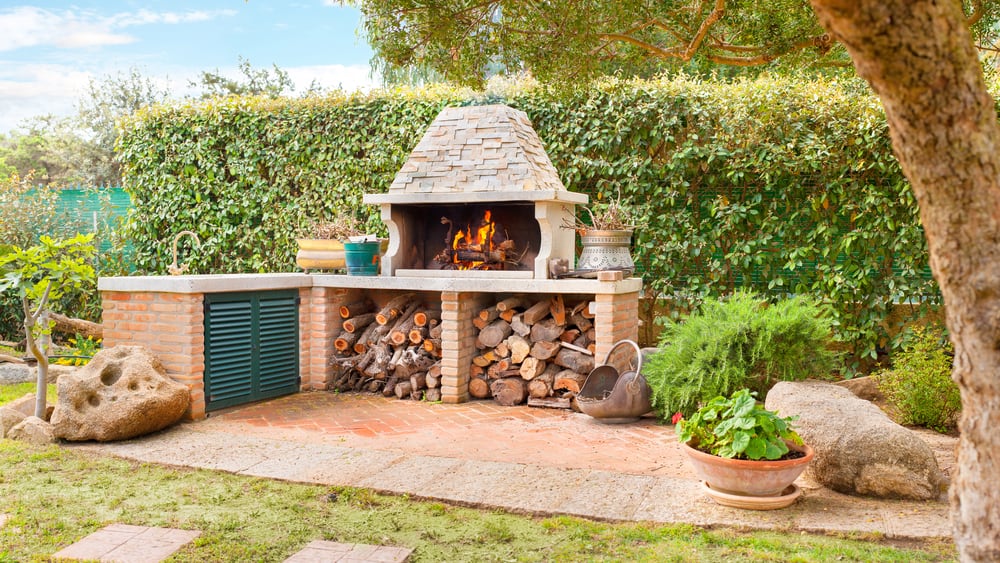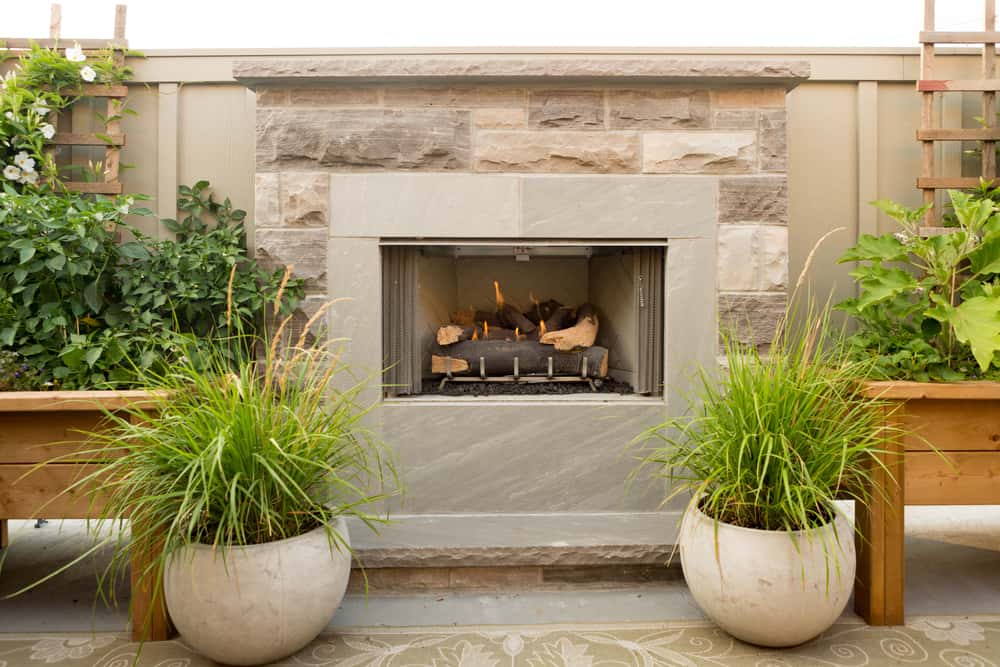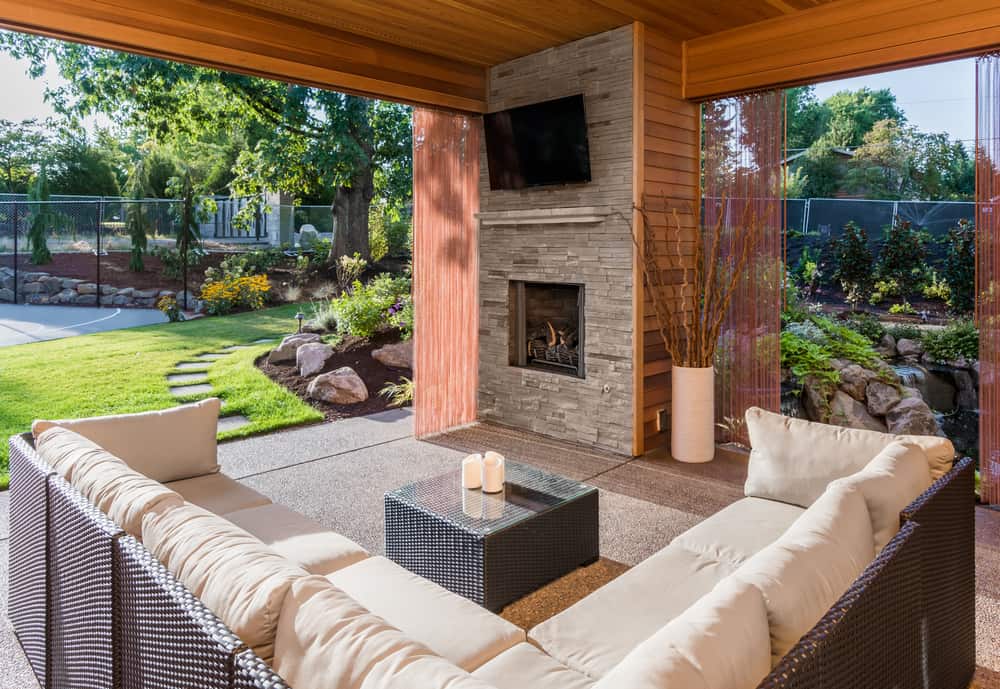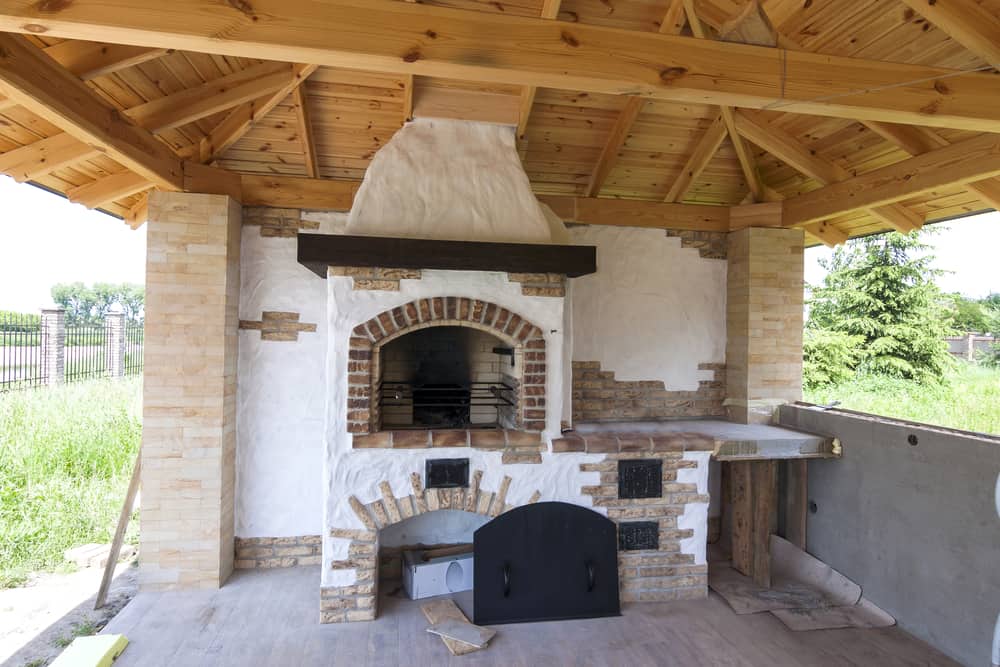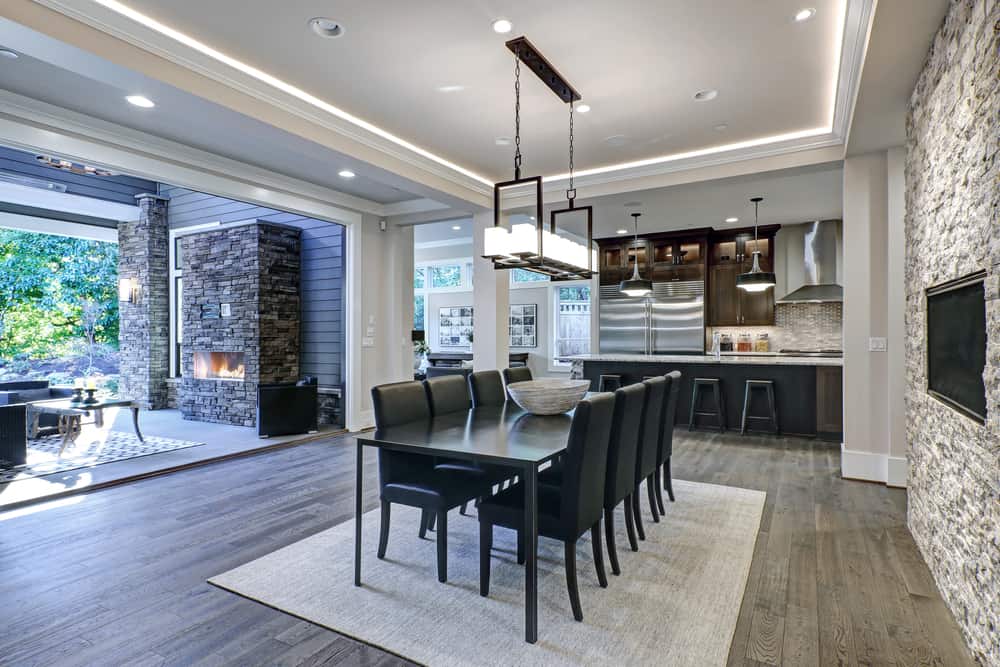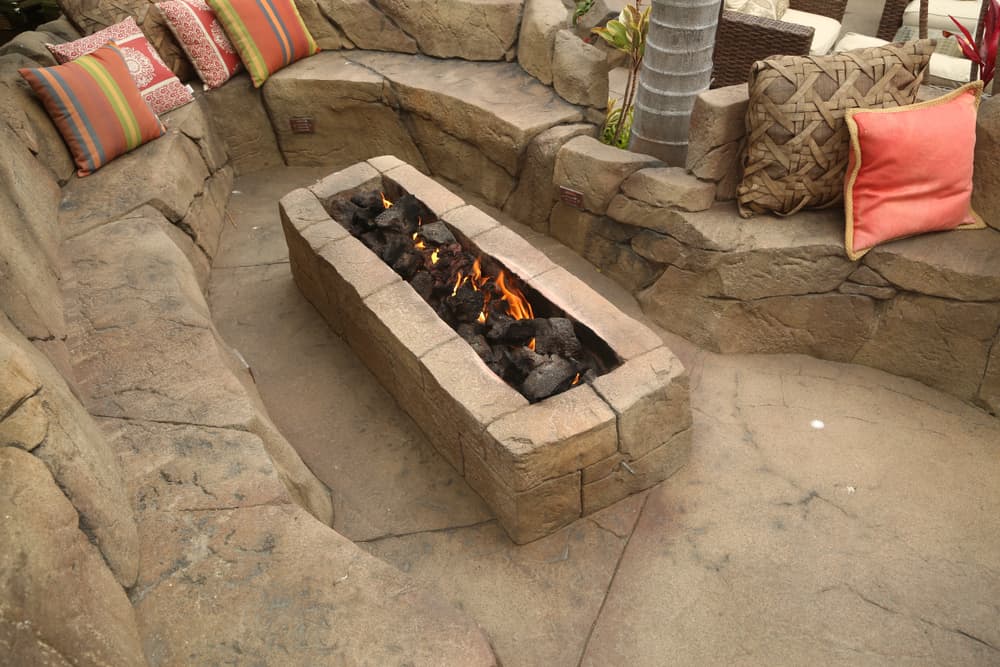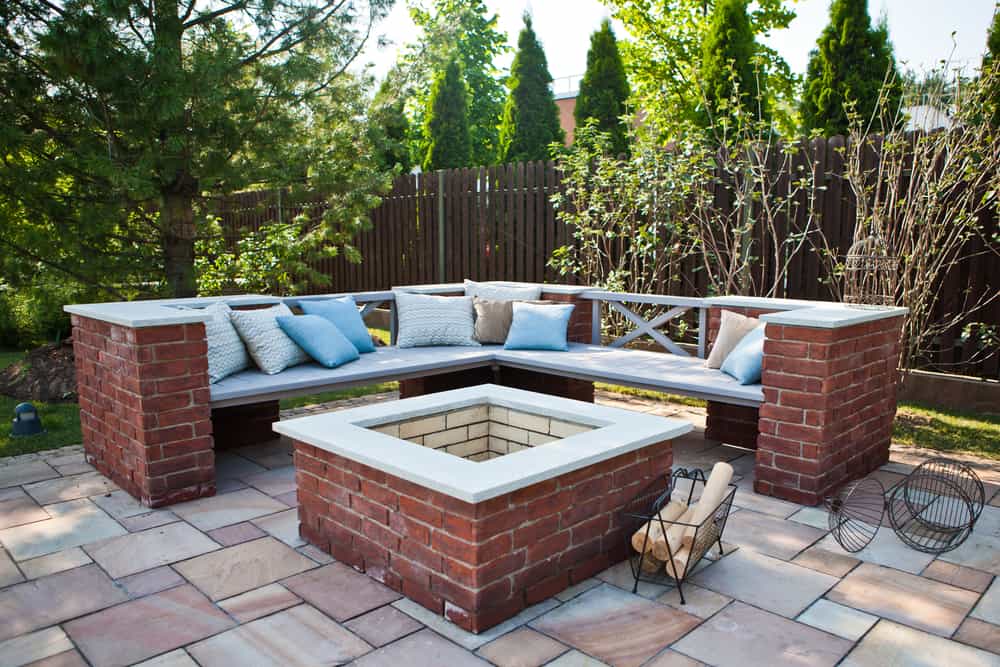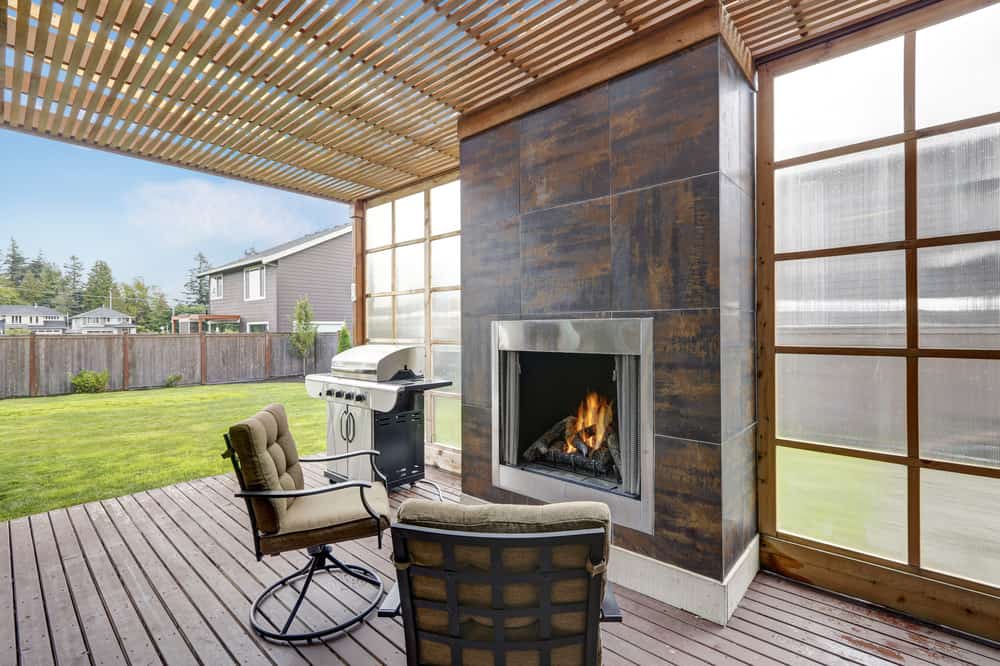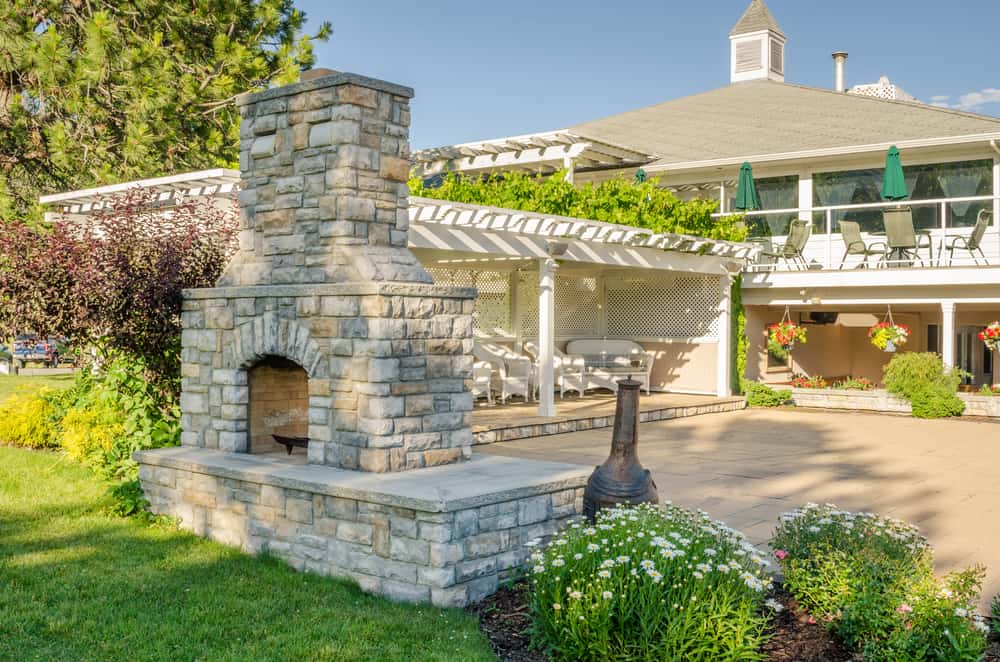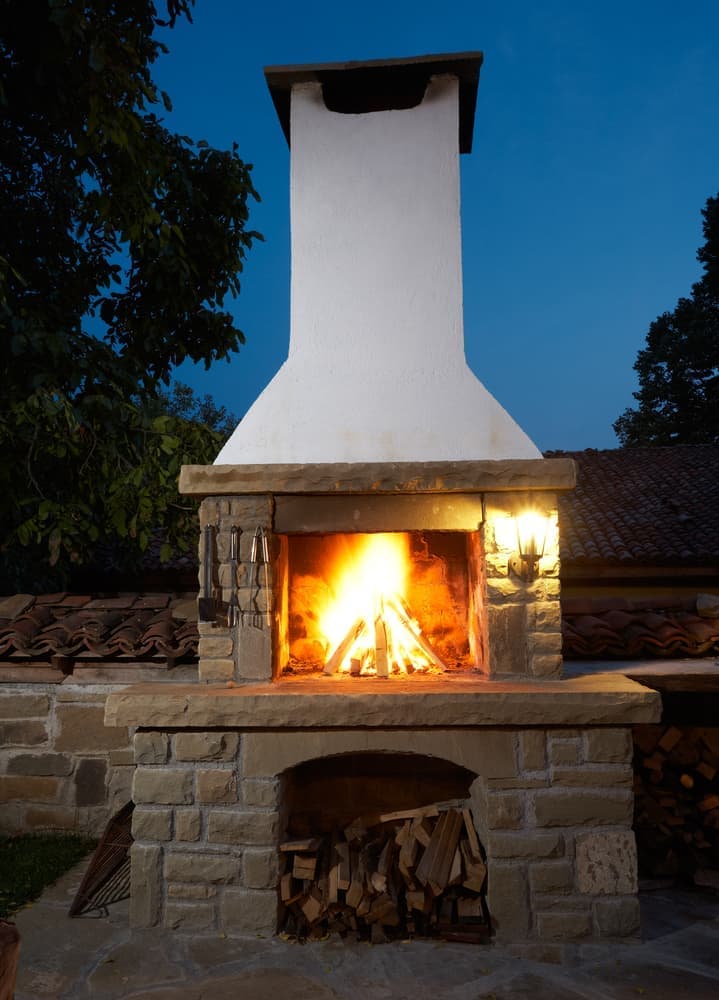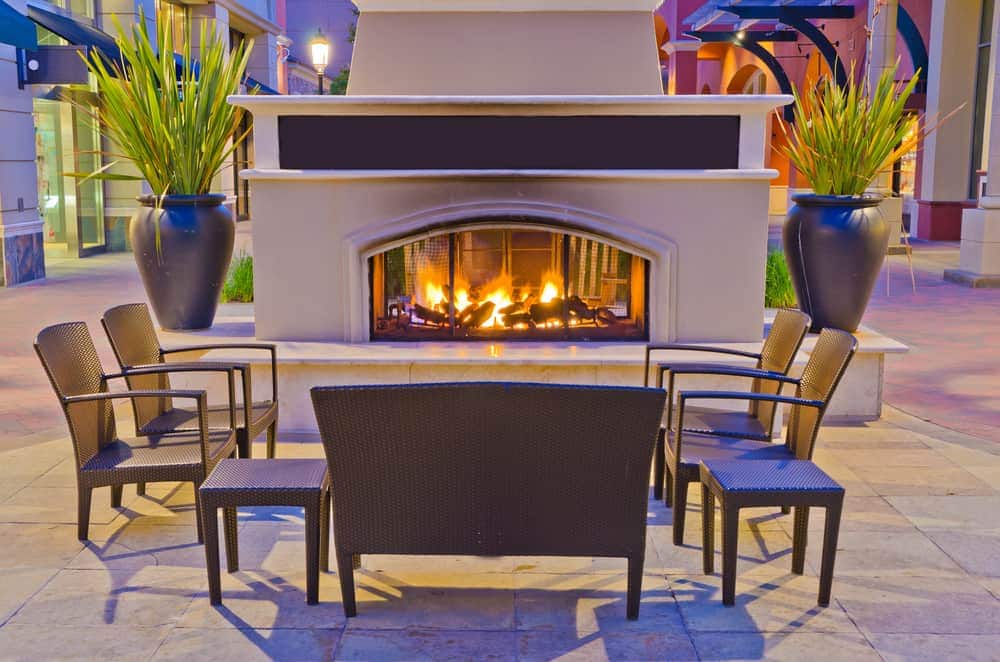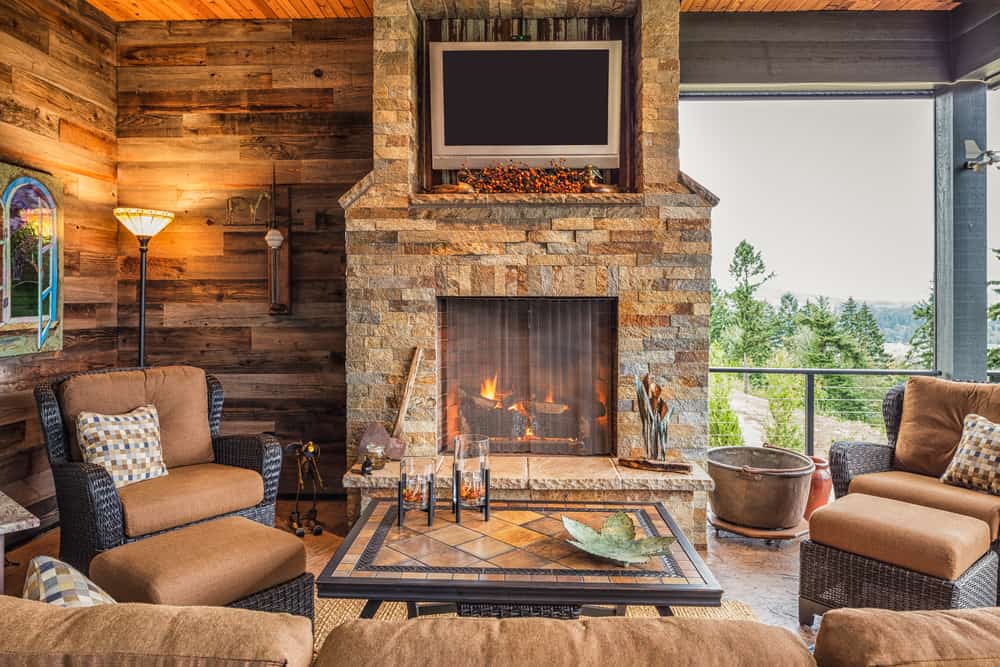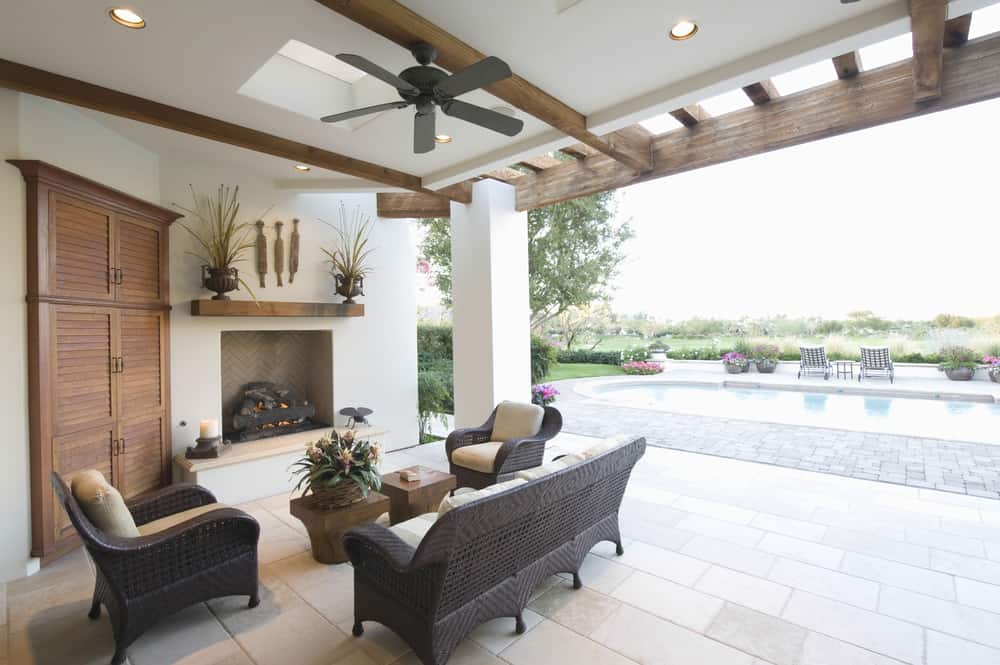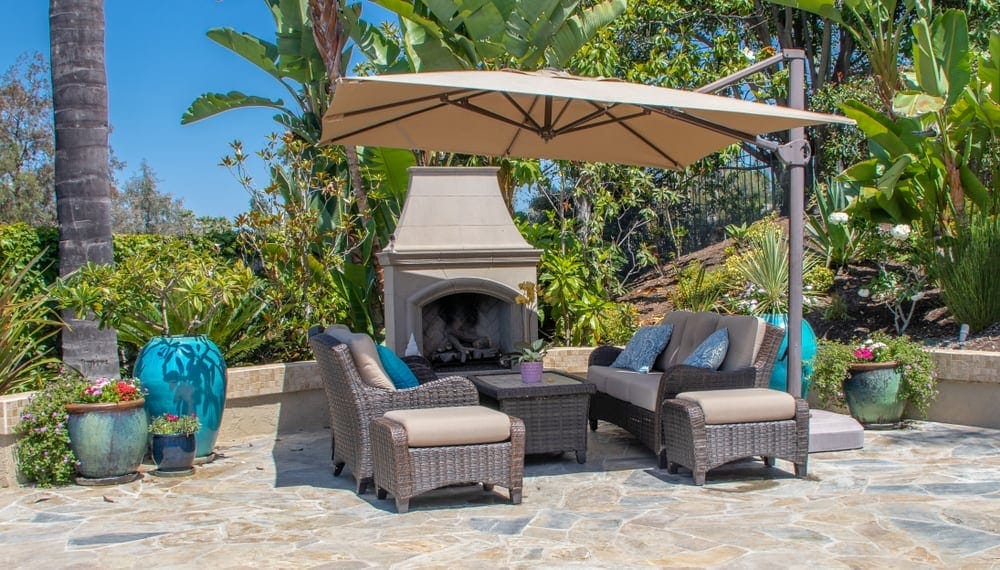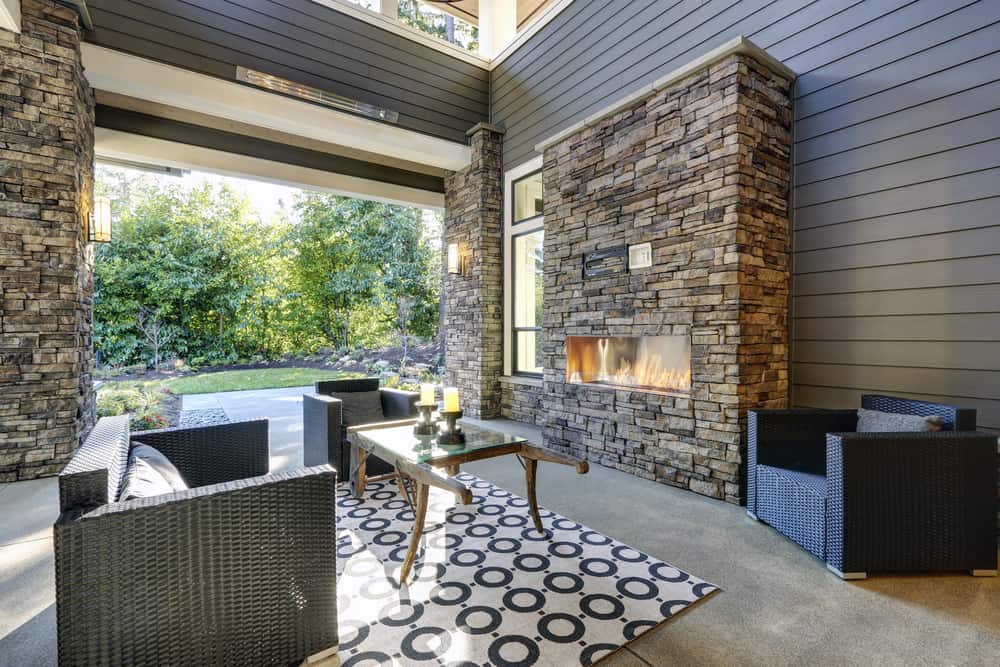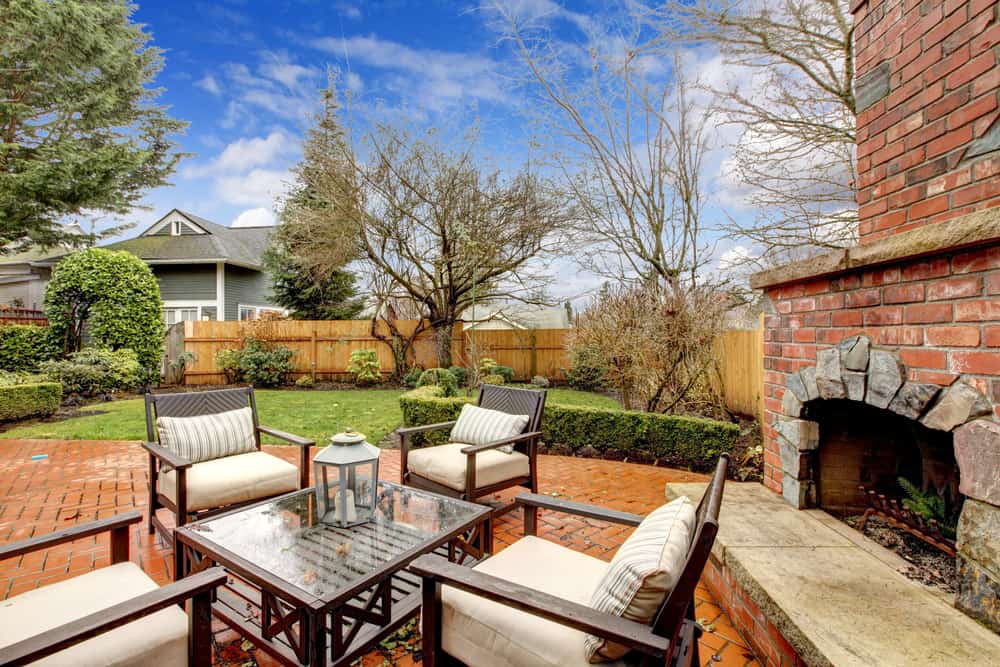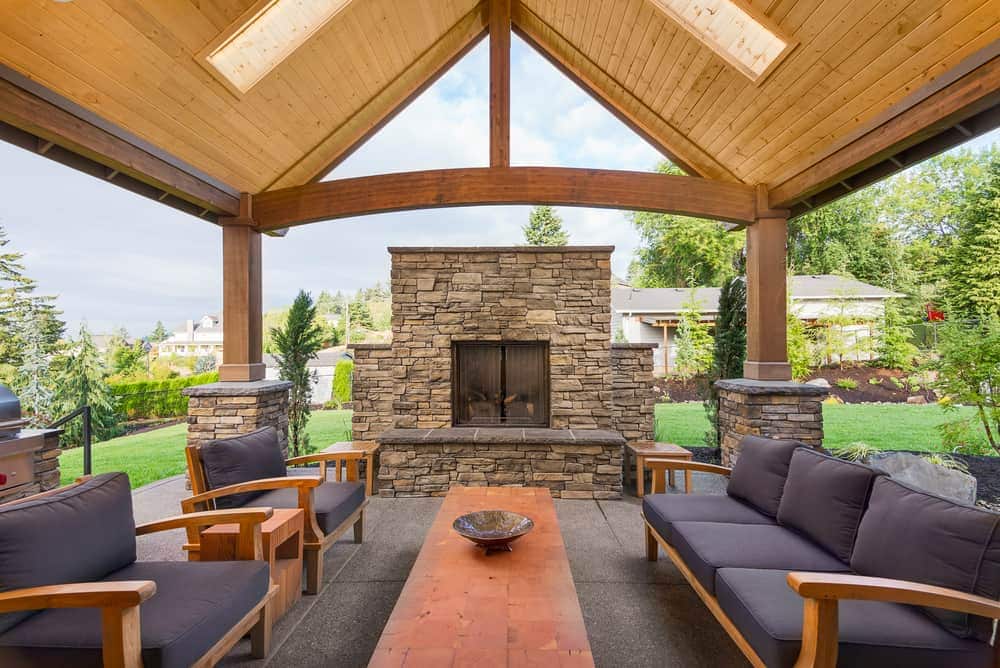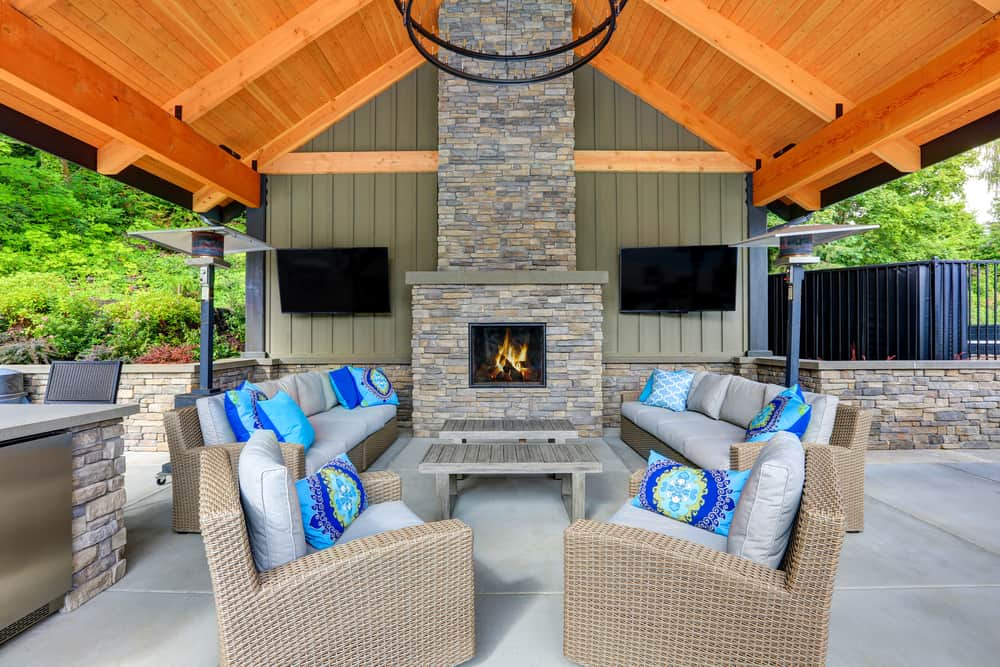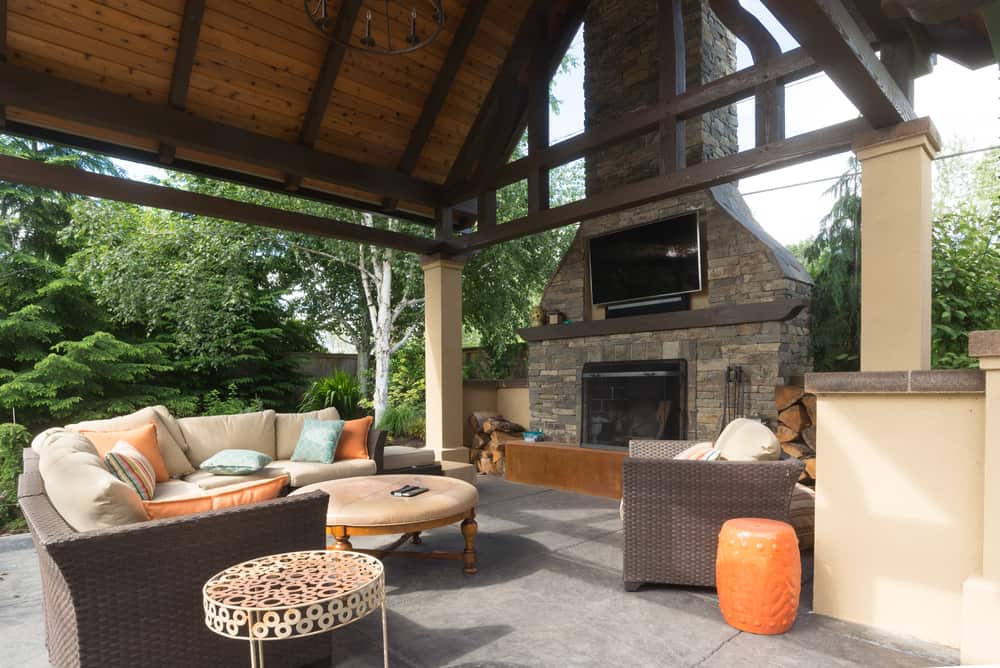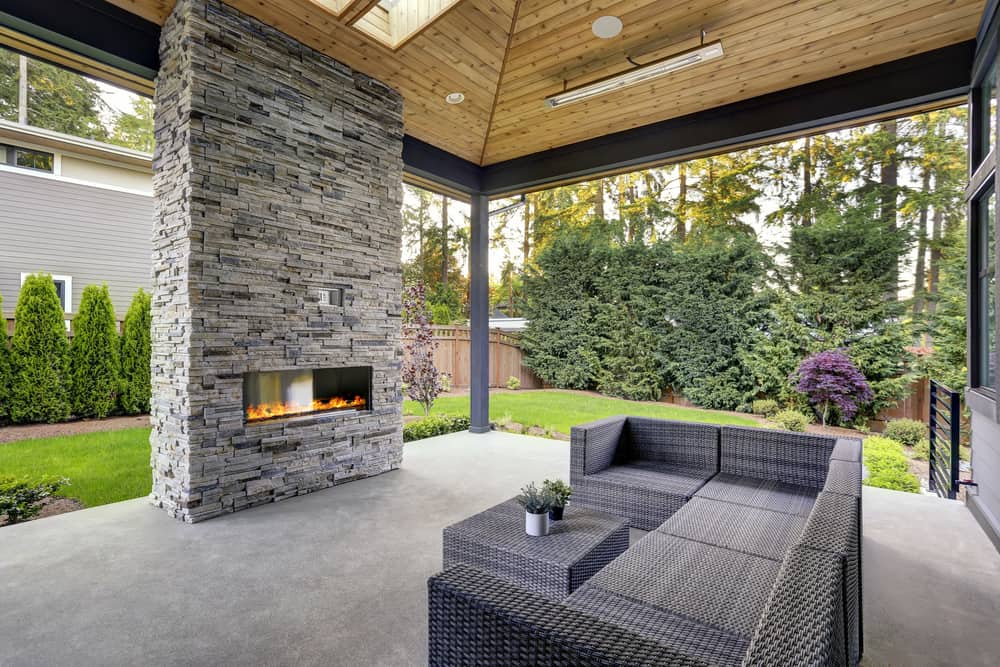Ever craved the joy of gathering around a fire under the night sky but didn’t want to leave the comfort of your home? Well, you can with an outdoor fireplace. Also known as chimineas, these fireplaces can be either freestanding or built-in.
Outdoor fireplaces can really add a level of ambiance and comfort to your outdoor space. So, if you have the budget for one, it can prove to be a great investment for upgrading your backyard patio or seating area.
Table of contents
Price
The first thing you need to consider when taking on this project is your budget. That said, the price of this project varies pretty wildly depending on a number of factors from the materials you’re using and how much custom work you want done.
On average, an outdoor fireplace will run you about $3,000. The low end falls at about $1,500; whereas, a fully custom stone fireplace may cost you $20,000+.
Prefabricated vs Custom
If you have a more modest budget, you should probably start by looking at prefabricated or modular fireplaces. These tend to be cheaper and more portable. While a custom project would likely require you to hire a mason, you can probably install a prefab with a couple friends, a bit of know-how, and some elbow grease.
On the down side, some of the designs for these prefabs can seem a bit canned or trite. So if you want something really specific or unique, you may want to consider saving up and going custom.
Custom projects give you much more flexibility and durability. These are usually built-in or generally more permanent. Plus, the material and style options can be adapted to what best suits your space and vision.
Material Types
Regardless of whether you go prefab or custom, you’re going to have a plethora of material options to choose from. Here are a few of the most popular options:
- Stone (gives a more modern finish)
- Brick (for a more classic look)
- Metal (cast iron, steel, etc.)
- Stucco
- Clay
Fuel Types
There are a few different fuel options for you to choose from. Each of these have their own pros and cons, which we’l discuss briefly below.
Gas
Natural gas fireplaces require the installation of a gas line, which costs roughly $25 per foot. However, the cost wracks up pretty quickly when you factor in obstacles such as decks, pools, and patios and the repair costs associated with each of those.
On the upside, once installed, gas fireplaces are smokeless, which is good if you have people who are allergic to smoke or if you live in a more condensed residential area. Plus, they require minimal cleaning and maintenance.
The base cost for a prefab natural gas can be anywhere from $750 to $6,000.
Propane
If you like the idea of a gas fireplace but don’t want to go through the trouble of installing a gas line, you can opt for a propane fireplace. These are fueled by a standalone tank, which will cost about $100-$500 each year. The kit price is $200 to $5,000. However, burying a propane line will cost around the same amount as a gas line.
Wood-Burning
How is an outdoor fireplace built?
So if you’re a really determined DIYer or you just want a glimpse at the process, here’s a brief overview of how a stone or brick facade outdoor fireplace is made.
First, of course, is the measurement phase. You have to pick the location for the structure then determine the width, depth, height, etc. of your new fireplace.
At this point, you should also determine the overall look you are trying to achieve and the material necessary to get there.
Next, if you don’t already have a level, suitable area for the fireplace, you’ll have to pour concrete to create an even foundation. Then you’ll layer concrete cinder blocks with mortar, leaving room for the chimney.
After your basic form is done, you can move on to the facade. Begin by creating the frame with 2×4 lumber, which you’ll then fix cement board to.
Once your frame is complete, use mortar to install your material of choice. Finish things off with a chimney cap, and it’s done (sort of).
If you want a gas or propane fueled fireplace, you’ll likely have a bit more work to do to get the party started. But that should give you a general idea of how the process of actually building the structure goes.
